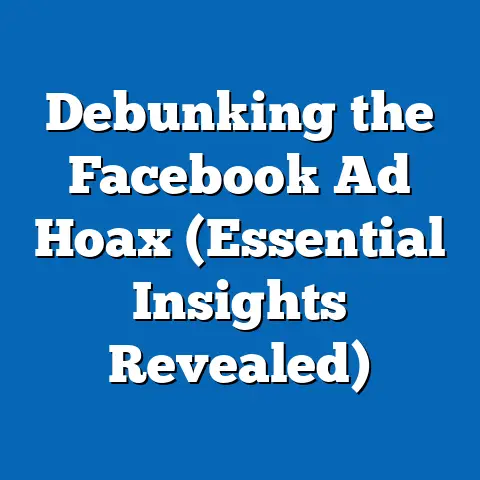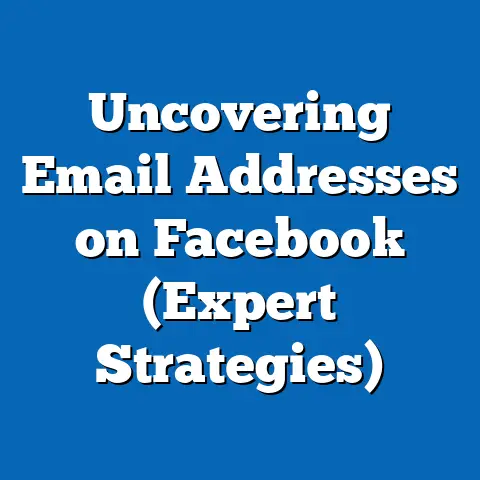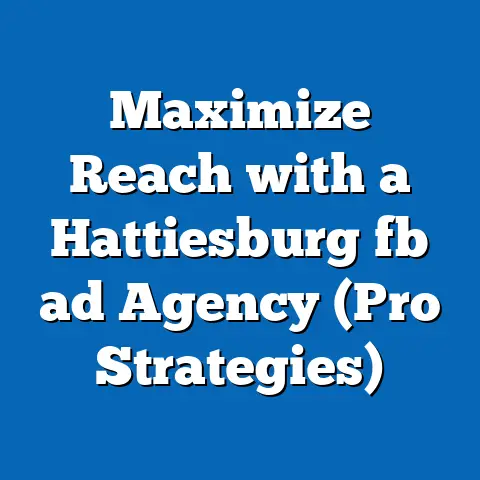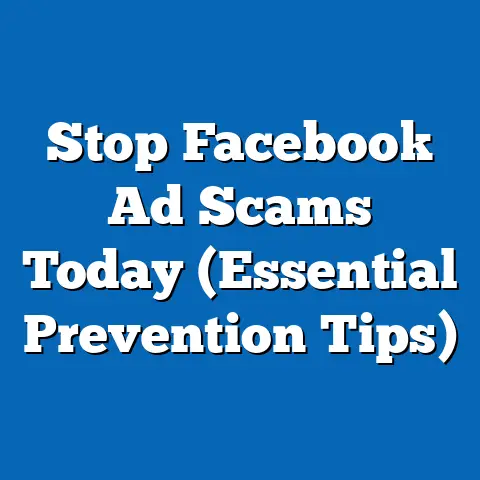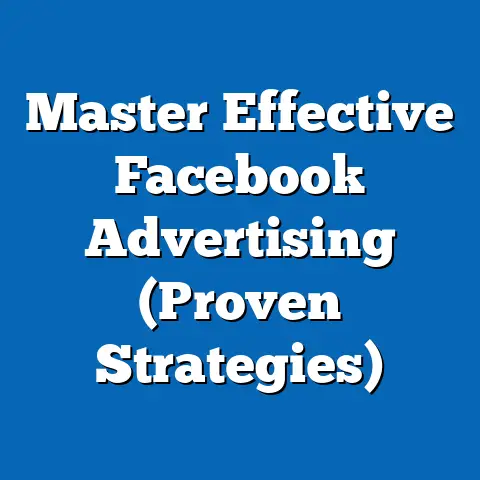Maximize Sales with BOGO Facebook Ads (Proven Strategies)
Have you ever scrolled through your Facebook feed and been instantly drawn to an ad? Maybe it was a vibrant image, a catchy headline, or perhaps… a tempting “Buy One, Get One” (BOGO) offer? I know I have. There’s something undeniably alluring about getting more for your money, and that’s precisely why BOGO promotions are such a powerful tool for driving sales.
Imagine two ads side-by-side. The first is a generic sales ad for shoes, featuring a simple image of the product and the text “Shoes on Sale – 20% Off.” It’s okay, but it doesn’t exactly jump off the page. Now, picture the second ad. It showcases the same shoes, but the headline screams “BOGO Bonanza! Buy One Pair, Get the Second 50% Off!” The image features two pairs of shoes, highlighting the deal. Which one grabs your attention more? For me, it’s the BOGO ad every time. The visual representation of getting something “extra” is inherently appealing.
In this article, I’m going to dive deep into the world of BOGO Facebook ads. I’ll share proven strategies, real-world examples, and actionable insights that you can use to create your own successful BOGO campaigns and watch your sales soar. Forget generic discounts; let’s unlock the power of the BOGO!
Understanding BOGO Promotions
Let’s get down to basics. What exactly is a BOGO promotion? Simply put, it’s a marketing strategy where customers get a second item for free or at a reduced price when they purchase one item at full price. It’s a classic tactic that has been used for years, and for good reason: it works.
The psychological appeal of BOGO offers is rooted in several factors. First, it taps into our inherent desire for a good deal. We love feeling like we’re getting a bargain, and a BOGO offer delivers that feeling in spades. Second, it creates a sense of urgency and scarcity. The limited-time nature of most BOGO promotions encourages customers to act quickly before the offer expires. Finally, it reduces the perceived risk of making a purchase. If you’re unsure about a product, the BOGO offer can be the push you need to give it a try, knowing you’re getting something “extra” in the process.
The benefits of BOGO offers extend far beyond just a quick sales boost. They can also lead to:
- Increased Average Order Value (AOV): Customers are more likely to add additional items to their cart to qualify for the BOGO offer, leading to a higher AOV.
- Customer Acquisition: BOGO promotions can attract new customers who might not have considered your brand otherwise.
- Inventory Clearance: Need to get rid of excess stock? A BOGO offer can be a great way to move products quickly.
- Brand Loyalty: A well-executed BOGO promotion can create a positive experience for customers, fostering loyalty and encouraging repeat purchases.
According to a study by Invesp, BOGO offers can increase sales by as much as 38%. That’s a significant jump! Another study by MarketingProfs found that BOGO offers are particularly effective for products with high perceived value, such as electronics and apparel. I’ve personally seen BOGO campaigns drive significant revenue increases for my clients, especially during key shopping seasons like Black Friday and the holidays.
Key Takeaway: BOGO promotions are a powerful marketing tool that leverages psychological principles to drive sales, increase AOV, and foster customer loyalty.
Setting Up Your BOGO Facebook Ad Campaign
Okay, now let’s get practical. How do you actually set up a BOGO Facebook ad campaign? Here’s a step-by-step guide:
-
Step 1: Define Your Goals: Before you even touch Facebook Ads Manager, you need to be crystal clear about what you want to achieve with your BOGO campaign. Are you looking to increase overall sales, clear out old inventory, attract new customers, or something else? Your goals will influence your targeting, ad creative, and budget. For example, if you’re trying to acquire new customers, you might target a broader audience with a compelling introductory offer. If you’re clearing inventory, you might focus on retargeting existing customers with a BOGO deal on specific products.
-
Step 2: Identify Your Target Audience: Facebook’s audience segmentation tools are incredibly powerful. You can target users based on demographics, interests, behaviors, and even custom audiences built from your website traffic or email list. For a BOGO campaign, consider targeting customers who have previously purchased similar products or shown interest in your brand. Lookalike audiences, which are based on your existing customer base, can also be a great way to reach new potential customers who are likely to be interested in your offer.
-
Step 3: Choose the Right Ad Format: Facebook offers a variety of ad formats, each with its own strengths. For BOGO offers, I often recommend carousel ads or collection ads. Carousel ads allow you to showcase multiple products with individual images and descriptions, making it easy to highlight the “buy one” and “get one” items. Collection ads are similar but feature a larger hero image or video at the top, followed by a grid of related products. Single image or video ads can also work well, especially if you have a strong visual that clearly communicates the BOGO offer. Experiment with different formats to see what resonates best with your audience.
-
Step 4: Craft Compelling Ad Copy: Your ad copy is crucial for grabbing attention and driving clicks. Emphasize the urgency and value of the BOGO offer. Use phrases like “Limited Time Offer!” “While Supplies Last!” and “Don’t Miss Out!” to create a sense of scarcity. Clearly state the terms of the BOGO offer and highlight the benefits of taking advantage of it. For example, “Buy One T-Shirt, Get a Second 50% Off! Stock up on your favorite styles before they’re gone!” Use strong call-to-actions, such as “Shop Now,” “Claim Your Offer,” or “Learn More.”
-
Step 5: Set Your Budget and Schedule: Determine how much you’re willing to spend on your BOGO campaign and how long you want it to run. Facebook allows you to set daily or lifetime budgets. I recommend starting with a smaller budget and gradually increasing it as you see positive results. Consider scheduling your ads to run during peak hours when your target audience is most active on Facebook. You can also use ad scheduling to target specific days of the week or times of day when your BOGO offer is most relevant.
Step 1: Define Your Goals: Before you even touch Facebook Ads Manager, you need to be crystal clear about what you want to achieve with your BOGO campaign. Are you looking to increase overall sales, clear out old inventory, attract new customers, or something else? Your goals will influence your targeting, ad creative, and budget. For example, if you’re trying to acquire new customers, you might target a broader audience with a compelling introductory offer. If you’re clearing inventory, you might focus on retargeting existing customers with a BOGO deal on specific products.
Step 2: Identify Your Target Audience: Facebook’s audience segmentation tools are incredibly powerful. You can target users based on demographics, interests, behaviors, and even custom audiences built from your website traffic or email list. For a BOGO campaign, consider targeting customers who have previously purchased similar products or shown interest in your brand. Lookalike audiences, which are based on your existing customer base, can also be a great way to reach new potential customers who are likely to be interested in your offer.
Step 3: Choose the Right Ad Format: Facebook offers a variety of ad formats, each with its own strengths. For BOGO offers, I often recommend carousel ads or collection ads. Carousel ads allow you to showcase multiple products with individual images and descriptions, making it easy to highlight the “buy one” and “get one” items. Collection ads are similar but feature a larger hero image or video at the top, followed by a grid of related products. Single image or video ads can also work well, especially if you have a strong visual that clearly communicates the BOGO offer. Experiment with different formats to see what resonates best with your audience.
Step 4: Craft Compelling Ad Copy: Your ad copy is crucial for grabbing attention and driving clicks. Emphasize the urgency and value of the BOGO offer. Use phrases like “Limited Time Offer!” “While Supplies Last!” and “Don’t Miss Out!” to create a sense of scarcity. Clearly state the terms of the BOGO offer and highlight the benefits of taking advantage of it. For example, “Buy One T-Shirt, Get a Second 50% Off! Stock up on your favorite styles before they’re gone!” Use strong call-to-actions, such as “Shop Now,” “Claim Your Offer,” or “Learn More.”
Step 5: Set Your Budget and Schedule: Determine how much you’re willing to spend on your BOGO campaign and how long you want it to run. Facebook allows you to set daily or lifetime budgets. I recommend starting with a smaller budget and gradually increasing it as you see positive results. Consider scheduling your ads to run during peak hours when your target audience is most active on Facebook. You can also use ad scheduling to target specific days of the week or times of day when your BOGO offer is most relevant.
Key Takeaway: A successful BOGO Facebook ad campaign requires careful planning, precise targeting, compelling ad copy, and a well-defined budget and schedule.
Designing Eye-Catching BOGO Ads
In the world of Facebook advertising, visuals are king. Your ad has to grab attention in a split second, and that means having a visually appealing and informative image or video. For BOGO deals, this is especially crucial. You need to clearly communicate the offer in a way that’s easy to understand and visually enticing.
Here are some tips for creating eye-catching graphics for your BOGO ads:
-
Showcase Both Products: Don’t just show the “buy one” item. Make sure to prominently feature the “get one” item as well. This visually reinforces the value of the offer.
-
Use High-Quality Images: This should be a no-brainer, but I still see too many ads with blurry or poorly lit images. Invest in professional product photography or use high-resolution stock photos.
-
Highlight the Discount: Make the discount percentage or dollar amount clear and easy to read. Use bold fonts and contrasting colors to make it stand out.
-
Create a Sense of Urgency: Use visual cues to create a sense of urgency, such as a countdown timer or a limited-time banner.
-
Keep it Simple: Don’t clutter your ad with too much text or too many elements. A clean, simple design is often more effective.
Showcase Both Products: Don’t just show the “buy one” item. Make sure to prominently feature the “get one” item as well. This visually reinforces the value of the offer.
Use High-Quality Images: This should be a no-brainer, but I still see too many ads with blurry or poorly lit images. Invest in professional product photography or use high-resolution stock photos.
Highlight the Discount: Make the discount percentage or dollar amount clear and easy to read. Use bold fonts and contrasting colors to make it stand out.
Create a Sense of Urgency: Use visual cues to create a sense of urgency, such as a countdown timer or a limited-time banner.
Keep it Simple: Don’t clutter your ad with too much text or too many elements. A clean, simple design is often more effective.
Tools like Canva and Adobe Spark are great resources for creating professional-looking ads, even if you don’t have a lot of design experience. They offer pre-designed templates and easy-to-use editing tools that can help you create visually stunning BOGO ads in minutes.
And don’t forget the call-to-action (CTA) button! This is your chance to drive conversions. Use a clear and compelling CTA, such as “Shop Now,” “Claim Your Offer,” or “Get Your BOGO Deal.” Make sure the CTA button is prominently displayed and easy to click.
Key Takeaway: Visually appealing and informative graphics are essential for capturing attention and clearly communicating your BOGO offer. Use high-quality images, highlight the discount, create a sense of urgency, and use a strong call-to-action.
Optimizing Your BOGO Facebook Ads for Performance
Creating a great BOGO ad is just the first step. To truly maximize your sales, you need to constantly optimize your campaign for performance. This means tracking your results, analyzing your data, and making adjustments to your targeting, ad creative, and budget.
Here are some key strategies for optimizing your BOGO Facebook ads:
-
A/B Testing: A/B testing involves creating multiple versions of your ad and testing them against each other to see which performs best. Test different images, headlines, ad copy, and targeting options. Facebook’s Ads Manager makes it easy to set up A/B tests and track the results. For example, you might test two different images of your products, two different headlines highlighting the BOGO offer, or two different target audiences based on demographics or interests.
-
Facebook Pixel: The Facebook Pixel is a small piece of code that you place on your website to track conversions and other valuable actions. This data allows you to optimize your ads for specific goals, such as purchases or leads. The Pixel also enables you to create retargeting audiences based on website visitors who have shown interest in your products or services.
-
Retargeting: Retargeting involves showing ads to users who have previously interacted with your brand, such as visiting your website or engaging with your Facebook page. Retargeting can be incredibly effective for BOGO offers, as it allows you to re-engage users who showed interest but didn’t convert. For example, you could retarget users who viewed a specific product page on your website with a BOGO offer on that product.
-
Analyze Ad Performance Metrics: Regularly review your ad performance metrics to identify areas for improvement. Key metrics to track include:
- Click-Through Rate (CTR): The percentage of users who click on your ad after seeing it. A high CTR indicates that your ad is engaging and relevant to your target audience.
- Conversion Rate: The percentage of users who complete a desired action (e.g., purchase, sign-up) after clicking on your ad. A high conversion rate indicates that your ad is effectively driving results.
- Cost Per Acquisition (CPA): The amount you pay to acquire a new customer. A low CPA indicates that your ad campaign is cost-effective.
- Return on Ad Spend (ROAS): The amount of revenue you generate for every dollar you spend on advertising. A high ROAS indicates that your ad campaign is profitable.
A/B Testing: A/B testing involves creating multiple versions of your ad and testing them against each other to see which performs best. Test different images, headlines, ad copy, and targeting options. Facebook’s Ads Manager makes it easy to set up A/B tests and track the results. For example, you might test two different images of your products, two different headlines highlighting the BOGO offer, or two different target audiences based on demographics or interests.
Facebook Pixel: The Facebook Pixel is a small piece of code that you place on your website to track conversions and other valuable actions. This data allows you to optimize your ads for specific goals, such as purchases or leads. The Pixel also enables you to create retargeting audiences based on website visitors who have shown interest in your products or services.
Retargeting: Retargeting involves showing ads to users who have previously interacted with your brand, such as visiting your website or engaging with your Facebook page. Retargeting can be incredibly effective for BOGO offers, as it allows you to re-engage users who showed interest but didn’t convert. For example, you could retarget users who viewed a specific product page on your website with a BOGO offer on that product.
Analyze Ad Performance Metrics: Regularly review your ad performance metrics to identify areas for improvement. Key metrics to track include:
- Click-Through Rate (CTR): The percentage of users who click on your ad after seeing it. A high CTR indicates that your ad is engaging and relevant to your target audience.
- Conversion Rate: The percentage of users who complete a desired action (e.g., purchase, sign-up) after clicking on your ad. A high conversion rate indicates that your ad is effectively driving results.
- Cost Per Acquisition (CPA): The amount you pay to acquire a new customer. A low CPA indicates that your ad campaign is cost-effective.
- Return on Ad Spend (ROAS): The amount of revenue you generate for every dollar you spend on advertising. A high ROAS indicates that your ad campaign is profitable.
By analyzing these metrics, you can identify which ads are performing well and which need improvement. Use this data to refine your targeting, ad creative, and budget allocation.
Key Takeaway: Continuous optimization is crucial for maximizing the performance of your BOGO Facebook ads. Use A/B testing, the Facebook Pixel, retargeting, and regular analysis of ad performance metrics to refine your strategy and drive better results.
Leveraging Customer Testimonials and Social Proof
People trust the opinions of others, especially when it comes to making purchasing decisions. That’s why incorporating customer testimonials and social proof into your BOGO ads can significantly enhance their effectiveness.
When potential customers see that other people have had positive experiences with your products or services, they’re more likely to trust your brand and take advantage of your BOGO offer.
Here are some ways to leverage customer testimonials and social proof in your BOGO ads:
-
Include Customer Quotes: Feature short, compelling quotes from satisfied customers in your ad copy or graphics. Highlight the benefits they experienced and why they love your products.
-
Showcase User-Generated Content: Encourage customers to share photos or videos of themselves using your products and feature this content in your ads. This can be a powerful way to demonstrate the real-world value of your products.
-
Display Ratings and Reviews: If you have a strong rating on Facebook or other review platforms, showcase it in your ads. This can build trust and credibility with potential customers.
-
Highlight Social Media Engagement: Show the number of likes, shares, and comments your BOGO ad has received. This can create a sense of social validation and encourage others to join the conversation.
Include Customer Quotes: Feature short, compelling quotes from satisfied customers in your ad copy or graphics. Highlight the benefits they experienced and why they love your products.
Showcase User-Generated Content: Encourage customers to share photos or videos of themselves using your products and feature this content in your ads. This can be a powerful way to demonstrate the real-world value of your products.
Display Ratings and Reviews: If you have a strong rating on Facebook or other review platforms, showcase it in your ads. This can build trust and credibility with potential customers.
Highlight Social Media Engagement: Show the number of likes, shares, and comments your BOGO ad has received. This can create a sense of social validation and encourage others to join the conversation.
I’ve seen businesses successfully use social proof in their BOGO campaigns by featuring customer photos with the products they purchased, along with a quote about why they loved the BOGO deal. This not only showcases the product but also builds trust and credibility with potential customers.
Key Takeaway: Incorporating customer testimonials and social proof into your BOGO ads can significantly enhance their effectiveness by building trust and credibility with potential customers.
Case Studies of Successful BOGO Facebook Ads
Let’s take a look at some real-world examples of brands that have successfully implemented BOGO Facebook ads:
-
Case Study 1: Clothing Retailer – The “Double the Style” Campaign: A clothing retailer ran a BOGO campaign offering “Buy One Top, Get the Second 50% Off.” They targeted women aged 25-45 who were interested in fashion and online shopping. Their ad featured a carousel showcasing a variety of stylish tops, with each image highlighting the BOGO offer. The ad copy emphasized the limited-time nature of the promotion and encouraged users to “double their style” for less. The results were impressive: a 35% increase in sales and a 20% increase in website traffic.
- Key Takeaway: Visually showcasing a variety of products and emphasizing the “double the style” benefit resonated with the target audience.
-
Case Study 2: Skincare Brand – The “Glow Up” Promotion: A skincare brand ran a BOGO campaign offering “Buy One Serum, Get a Second Free.” They targeted women aged 30-55 who were interested in skincare and anti-aging products. Their ad featured a video showcasing the benefits of the serum, with testimonials from satisfied customers. The ad copy highlighted the “glow up” potential of the BOGO offer and encouraged users to “experience the difference” for themselves. The campaign resulted in a 40% increase in serum sales and a 25% increase in brand awareness.
- Key Takeaway: Using video testimonials and focusing on the “glow up” benefit created a strong emotional connection with the target audience.
-
Case Study 3: Food Delivery Service – The “Dinner for Two” Deal: A food delivery service ran a BOGO campaign offering “Buy One Entree, Get the Second Free.” They targeted adults aged 25-55 who were interested in food delivery and dining out. Their ad featured a mouth-watering image of two entrees, with the headline “Dinner for Two, On Us!” The ad copy emphasized the convenience and value of the BOGO offer and encouraged users to “treat themselves” to a delicious meal. The campaign resulted in a 50% increase in orders and a 30% increase in new customers.
- Key Takeaway: Using a visually appealing image of food and focusing on the convenience and value of the “dinner for two” deal resonated with the target audience.
Case Study 1: Clothing Retailer – The “Double the Style” Campaign: A clothing retailer ran a BOGO campaign offering “Buy One Top, Get the Second 50% Off.” They targeted women aged 25-45 who were interested in fashion and online shopping. Their ad featured a carousel showcasing a variety of stylish tops, with each image highlighting the BOGO offer. The ad copy emphasized the limited-time nature of the promotion and encouraged users to “double their style” for less. The results were impressive: a 35% increase in sales and a 20% increase in website traffic.
- Key Takeaway: Visually showcasing a variety of products and emphasizing the “double the style” benefit resonated with the target audience.
Case Study 2: Skincare Brand – The “Glow Up” Promotion: A skincare brand ran a BOGO campaign offering “Buy One Serum, Get a Second Free.” They targeted women aged 30-55 who were interested in skincare and anti-aging products. Their ad featured a video showcasing the benefits of the serum, with testimonials from satisfied customers. The ad copy highlighted the “glow up” potential of the BOGO offer and encouraged users to “experience the difference” for themselves. The campaign resulted in a 40% increase in serum sales and a 25% increase in brand awareness.
- Key Takeaway: Using video testimonials and focusing on the “glow up” benefit created a strong emotional connection with the target audience.
Case Study 3: Food Delivery Service – The “Dinner for Two” Deal: A food delivery service ran a BOGO campaign offering “Buy One Entree, Get the Second Free.” They targeted adults aged 25-55 who were interested in food delivery and dining out. Their ad featured a mouth-watering image of two entrees, with the headline “Dinner for Two, On Us!” The ad copy emphasized the convenience and value of the BOGO offer and encouraged users to “treat themselves” to a delicious meal. The campaign resulted in a 50% increase in orders and a 30% increase in new customers.
- Key Takeaway: Using a visually appealing image of food and focusing on the convenience and value of the “dinner for two” deal resonated with the target audience.
Key Takeaway: These case studies demonstrate that successful BOGO Facebook ads require a clear understanding of your target audience, compelling ad creative, and a focus on the benefits of the offer.
Conclusion
BOGO Facebook ads are a powerful tool for boosting sales, attracting new customers, and clearing inventory. By understanding the psychological appeal of BOGO offers, setting up your campaigns strategically, designing eye-catching ads, optimizing for performance, and leveraging customer testimonials, you can create BOGO campaigns that drive significant results.
Don’t be afraid to experiment with different BOGO offers, ad formats, and targeting options to see what works best for your business. Track your results, analyze your data, and make adjustments as needed. With a little creativity and effort, you can unlock the power of BOGO Facebook ads and watch your sales soar.
So, what are you waiting for? Start planning your BOGO Facebook ad campaign today and see the difference it can make for your business!

